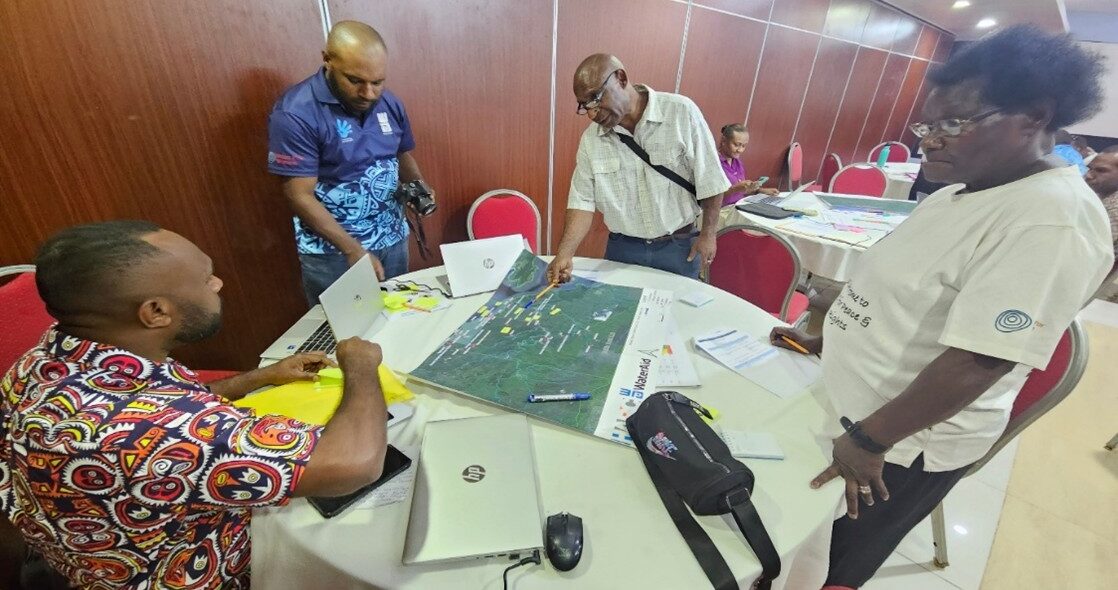
Networked water governance in Papua New Guinea’s WaSH era - Devpolicy Blog from the Development Policy Centre
This is the first article in a two-part series reporting on recent research by WaterAid, World Vision PNG and the ANU Development Policy Centre. Access to clean water and sanitation is a fundamental human right yet for many people in Papua New Guinea it remains out of reach. Despite the country’s abundant rainfall, rivers and lakes, households across PNG have some of the poorest access to safe water in the Pacific. Recent data show that water, sanitation and hygiene (WaSH) indicators are stagnating — or even worsening. Understanding why this is happening, and how government, communities and development partners can work together to change it, is therefore crucial. Drawing on recent research by WaterAid, World Vision PNG and the ANU’s Development Policy Centre, in this blog we explore how the governance of water in PNG has shifted over time, what’s driving that change and how it’s shaping efforts to improve access to and the management of WaSH resources across the country. For decades, PNG’s approach to water policy has evolved alongside national priorities and global development trends. During the late colonial period, the focus was on building infrastructure for water supply and sewerage in major towns. After independence, policy attention expanded to include broader resource management and environmental conservation. By the early 2000s, influenced by the Millennium Development Goals, the focus shifted again — towards improving access to safe water, sanitation and hygiene (WaSH). A key turning point came in 2015, when the Department of National Planning and Monitoring (DNPM) launched the National WaSH Policy. This policy provided a framework for financing and expanding water and sanitation services. It marked what we call the beginning of the WaSH era — a period where water-related policies and legislation prioritised improving access to WaSH across the country. Since then, WaSH objectives have been woven into other major national policies and plans, including the National Health Plan and the National Agriculture Plan. Unlike earlier approaches that focused on urban and peri-urban areas, the WaSH era emphasised improving access in rural and remote communities. To achieve this, the government — supported by donors — introduced a more devolved model through the creation of District Water Committees (DWCs). These committees, chaired by district administrators and including local government, departmental and community representatives, are tasked with collecting data on water use and quality and preparing five-year WaSH investment plans. The idea is that these committees will allocate a portion of the funds available through the District Services Improvement Program (up to 20 million kina per district) to local water projects that respond directly to community needs. That’s the model on paper. In reality, as is often the case in PNG, the picture is more complicated. Nearly a decade after piloting the DWC in 14 districts, there has been limited expansion and uptake. Yet in the past three years, momentum has been building. With renewed support from the Australian aid program and international NGOs such as WaterAid and World Vision, plans are now underway to expand DWCs to other parts of the country. To understand how decisions about water resources are actually made, our research examined the network of actors involved in WaSH governance — ranging from national and district government officials to international NGOs and local civil society groups. Field work took place in eight rural and urban sites across South Fly and Wewak Districts, as well as with government and NGO representatives in Port Moresby. We then tested our findings through a workshop with more than 45 stakeholders from seven districts and five provinces. We found that delivering WaSH services involves a complex web of relationships across multiple levels of government and development organisations. Three groups stand out as especially central: international NGOs (INGOs), Local Level Government (LLG) managers, and District Development Authority (DDA) managers or CEOs. INGOs often play a key brokerage role, connecting other actors and supporting the implementation of national policy. DDAs and LLGs are also pivotal, given their role in leading DWCs and steering district planning. However, the reliance on INGOs raises questions about long-term sustainability. When donor programs end or funding is withdrawn — as happened recently with USAID —these systems will likely struggle to continue. INGOs are aware of this and increasingly work within government systems to strengthen capacity. Their support has included training, planning tools and data systems that align with DNPM frameworks. In some cases, DWCs are already operating entirely with government and DSIP funding, such as two in East New Britain Province. Respondents in our study highlighted several gaps in the current network. Many called for stronger engagement from provincial officials, politicians and district government staff — people who can help secure resources and connect subnational service providers with national policy makers. Strengthening relationships between INGOs and Provincial Health Authorities will also be important to ensure better coordination across levels of government. A renewed focus on the connections between these actors will be vital as PNG’s WaSH sector grows. Plans to establish DWCs in every district will require both coordination and political support. Some members of parliament may view DWCs as limiting their control over DSIP funds, but others have found them to be useful structures for delivering tangible results for their communities. At this stage, international support remains essential to sustaining WaSH programs in PNG. But as the WaSH era matures, INGOs will need to “work themselves out of a job” by strengthening government systems and building national leadership. Where DWCs have succeeded, strong local leadership — particularly from district administrators — has been key to sustainability and inclusion. However, as we highlight in our next blog, the continuing gap between men’s and women’s participation in decision-making reminds us that this work is far from complete. Read the full report, Improving water governance in PNG.